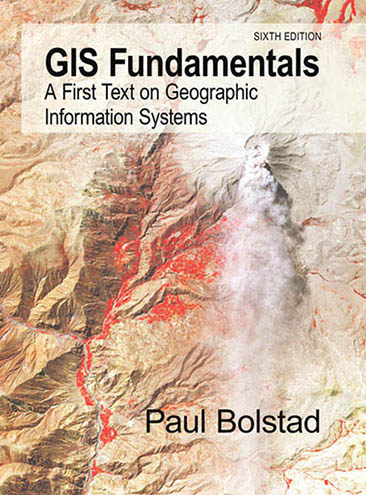
Sixth Edition
Availability: In Stock/Ready to Ship.
Suggested retail price shown above.
For discounted Bookstore or School District bulk orders: Contact Us
New and updated Sixth Edition of GIS Fundamentals, 6th Edition — the bestselling GIS textbook by Paul Bolstad.
Geographic Information Systems (GIS) are computer-based tools for the entry, maintenance, and analysis of spatial data. GIS are critical for effective resource management, and have been applied across a wide range of science, business, and government endeavours.
This book provides an introduction to the theory and application of GIS. It is written for use in a first-year GIS class and as a reference for the GIS practitioner. This sixth edition balances theoretical and practical material, so that students may apply knowledge of GIS in the solution of real-world problems. Improvements over the previous editions are included in each chapter. Topics treated include an introduction to GIS, spatial data models, map projections, data entry, image data, GPS, digital data, database systems in GIS, general spatial analysis, raster analysis, terrain modeling, metadata, standards, and accuracy assessments.
Each textbook purchase includes digital e-Book access. Please Note: the e-Book's unique digital access code is printed inside front cover of the shrink-wrapped textbook; as such, the e-Book digital access code cannot be sent separately by email in advance.
Supplemental Materials are available here.